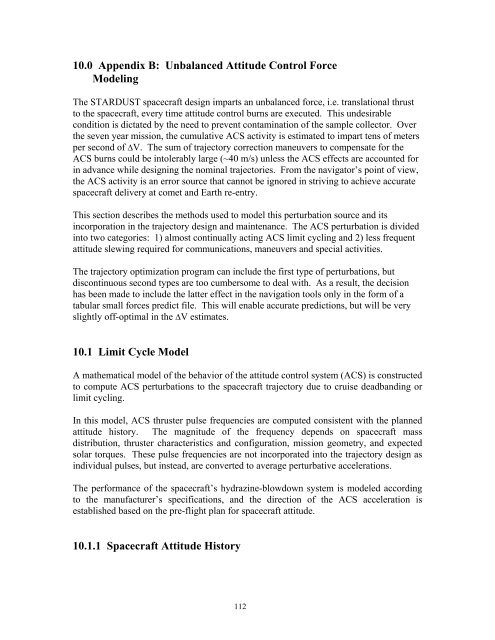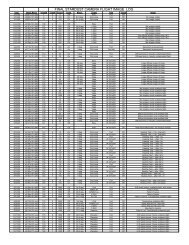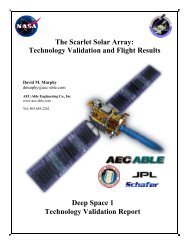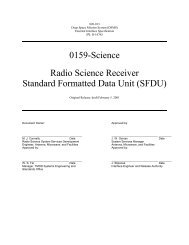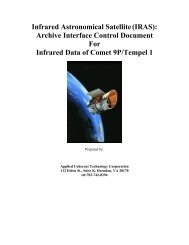MISSION PLAN - PDS Small Bodies Node
MISSION PLAN - PDS Small Bodies Node
MISSION PLAN - PDS Small Bodies Node
You also want an ePaper? Increase the reach of your titles
YUMPU automatically turns print PDFs into web optimized ePapers that Google loves.
10.0 Appendix B: Unbalanced Attitude Control Force<br />
Modeling<br />
The STARDUST spacecraft design imparts an unbalanced force, i.e. translational thrust<br />
to the spacecraft, every time attitude control burns are executed. This undesirable<br />
condition is dictated by the need to prevent contamination of the sample collector. Over<br />
the seven year mission, the cumulative ACS activity is estimated to impart tens of meters<br />
per second of ∆V. The sum of trajectory correction maneuvers to compensate for the<br />
ACS burns could be intolerably large (~40 m/s) unless the ACS effects are accounted for<br />
in advance while designing the nominal trajectories. From the navigator’s point of view,<br />
the ACS activity is an error source that cannot be ignored in striving to achieve accurate<br />
spacecraft delivery at comet and Earth re-entry.<br />
This section describes the methods used to model this perturbation source and its<br />
incorporation in the trajectory design and maintenance. The ACS perturbation is divided<br />
into two categories: 1) almost continually acting ACS limit cycling and 2) less frequent<br />
attitude slewing required for communications, maneuvers and special activities.<br />
The trajectory optimization program can include the first type of perturbations, but<br />
discontinuous second types are too cumbersome to deal with. As a result, the decision<br />
has been made to include the latter effect in the navigation tools only in the form of a<br />
tabular small forces predict file. This will enable accurate predictions, but will be very<br />
slightly off-optimal in the ∆V estimates.<br />
10.1 Limit Cycle Model<br />
A mathematical model of the behavior of the attitude control system (ACS) is constructed<br />
to compute ACS perturbations to the spacecraft trajectory due to cruise deadbanding or<br />
limit cycling.<br />
In this model, ACS thruster pulse frequencies are computed consistent with the planned<br />
attitude history. The magnitude of the frequency depends on spacecraft mass<br />
distribution, thruster characteristics and configuration, mission geometry, and expected<br />
solar torques. These pulse frequencies are not incorporated into the trajectory design as<br />
individual pulses, but instead, are converted to average perturbative accelerations.<br />
The performance of the spacecraft’s hydrazine-blowdown system is modeled according<br />
to the manufacturer’s specifications, and the direction of the ACS acceleration is<br />
established based on the pre-flight plan for spacecraft attitude.<br />
10.1.1 Spacecraft Attitude History<br />
112


